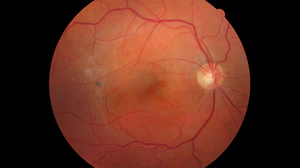New Research Explores the Health Implications of Branch Retinal Vein Occlusion

A recent study from Denmark has broken new ground in understanding the underlying causes and health implications of branch retinal vein occlusion (BRVO), a serious eye disorder and common cause of vision loss that affects 13.9 million persons (primarily older adults) worldwide.
About Branch Retinal Vein Occlusion
As defined by PubMed Health, a retinal vein occlusion is a blockage [i.e., “occlusion”] of the small veins that carry blood away from the retina, the light-sensitive tissue that lines the inside surface of the eye. The retina converts incoming light into nerve signals and sends them to the brain, which interprets them as visual images.
Blockage of smaller, “branching,” veins (branch retinal vein occlusion or BRVO) in the retina often occurs when retinal arteries that have been thickened or hardened by atherosclerosis “cross over” and place pressure on a retinal vein. A branch retinal vein occlusion is sometimes referred to as “a stroke on the retina.”
The British Medical Journal
The Danish study, entitled Comorbidity in patients with branch Retinal Vein Occlusion, was published on November 30, 2012, in the British Medical Journal (BMJ), an online, open-access, peer-reviewed journal published by the British Medical Journal Group. (Note: “Comorbidity” refers to the presence of one or more diseases or disorders in addition to a primary disease or disorder.)
The authors are Mette Bertelsen, Allan Linneberg, Thomas Rosenberg, Nynne Christoffersen, Henrik Vorum, Else Gade, and Michael Larsen, representing the following Danish institutions: Department of Ophthalmology, Glostrup Hospital; National Eye Clinic for the Visually Impaired, Kennedy Center; University of Copenhagen; Research Centre for Prevention and Health, Glostrup Hospital; Department of Ophthalmology, Aalborg University Hospital; and Department of Ophthalmology, Odense University Hospital.




